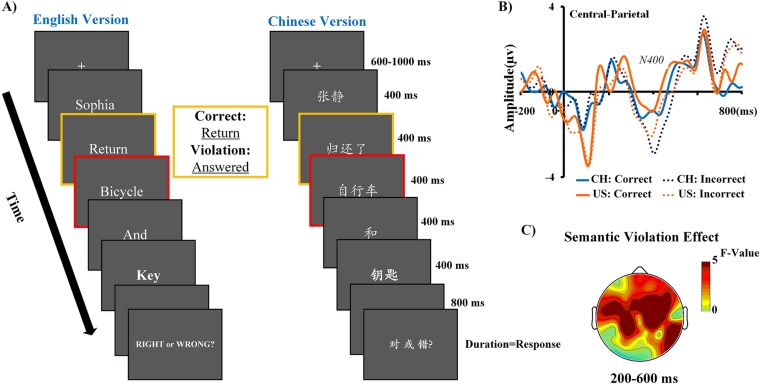Fig. S1.
Semantic task and results. (A) The semantic violation task procedure in which subjects were randomly presented a number of semantic correct (e.g., Sophia returned bicycle and key) or semantic incorrect (e.g., Sophia answered bicycle and key) sentences and asked to judge whether they were right or wrong by using an index finger on the left and right hand on a keyboard. In the semantic task, the sentence was segmented into several words or short phrases that appeared for 400 ms, with an additional 100-ms blank. The rectangle with a red frame is the crucial word (e.g., bicycle) for generating ERP components. (B) Grand average ERPs for CPz (a representative electrode for the central-parietal region) in the semantic correct and incorrect conditions for China (CH) and United States (US). (C) The F-value topography shows the semantic violation effect of N400 at 200–600 ms.

